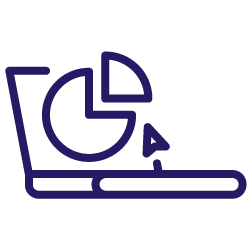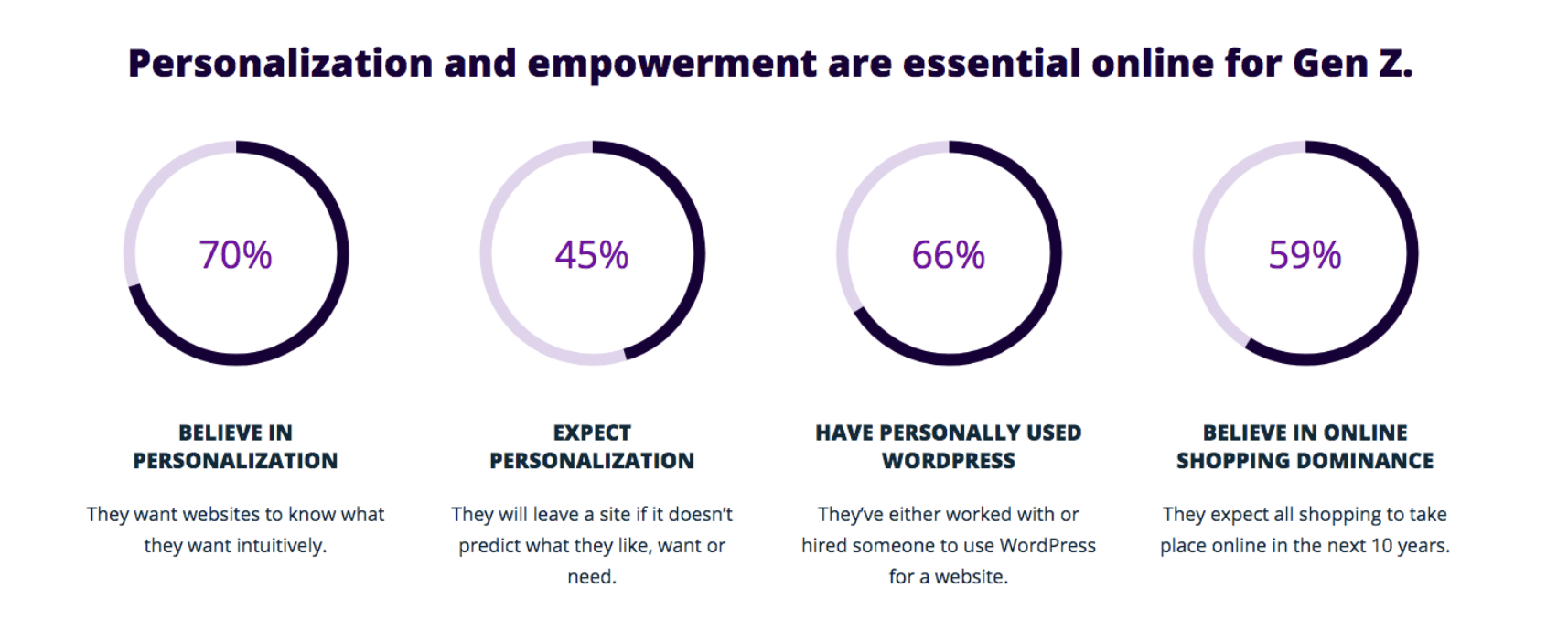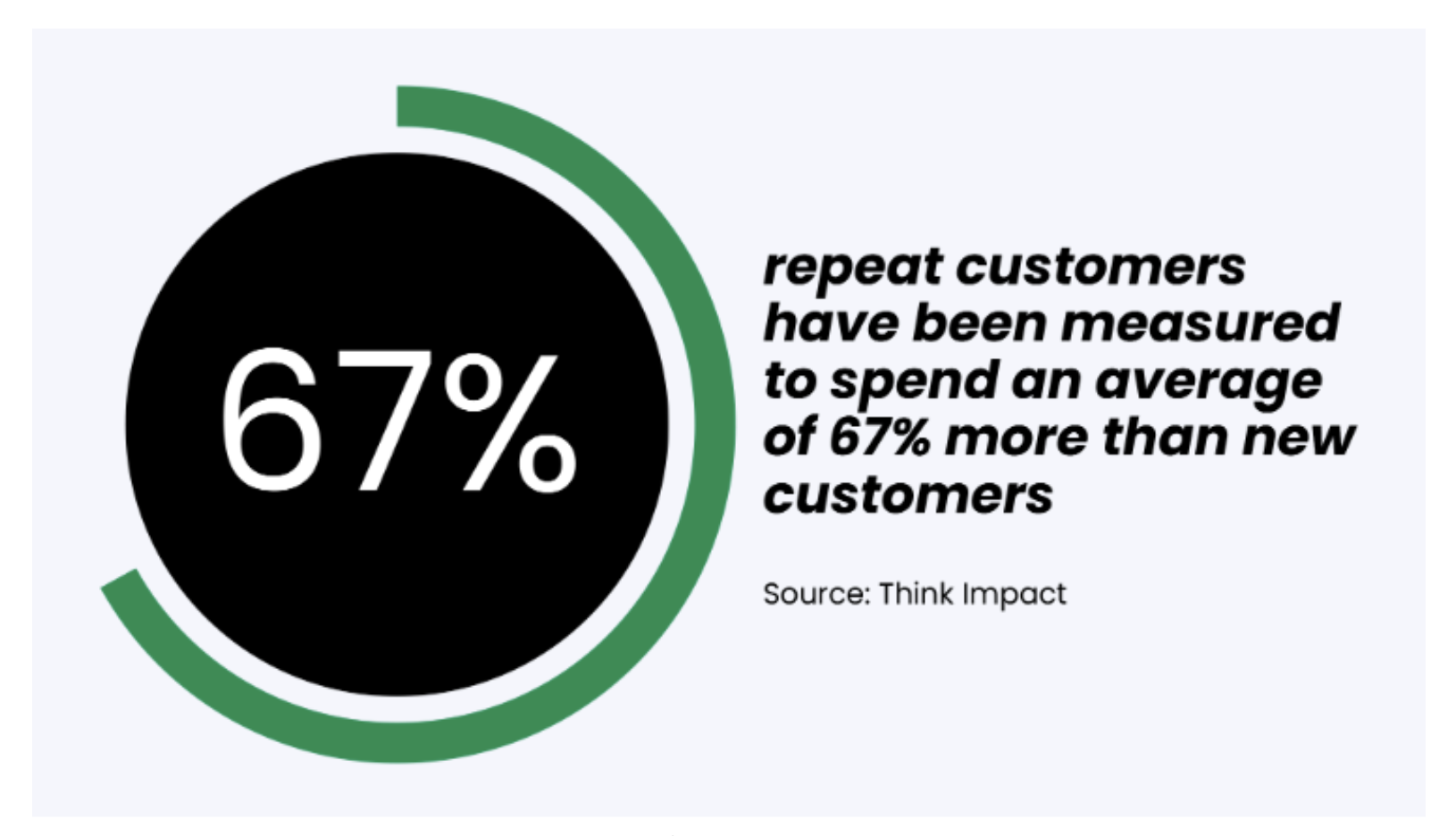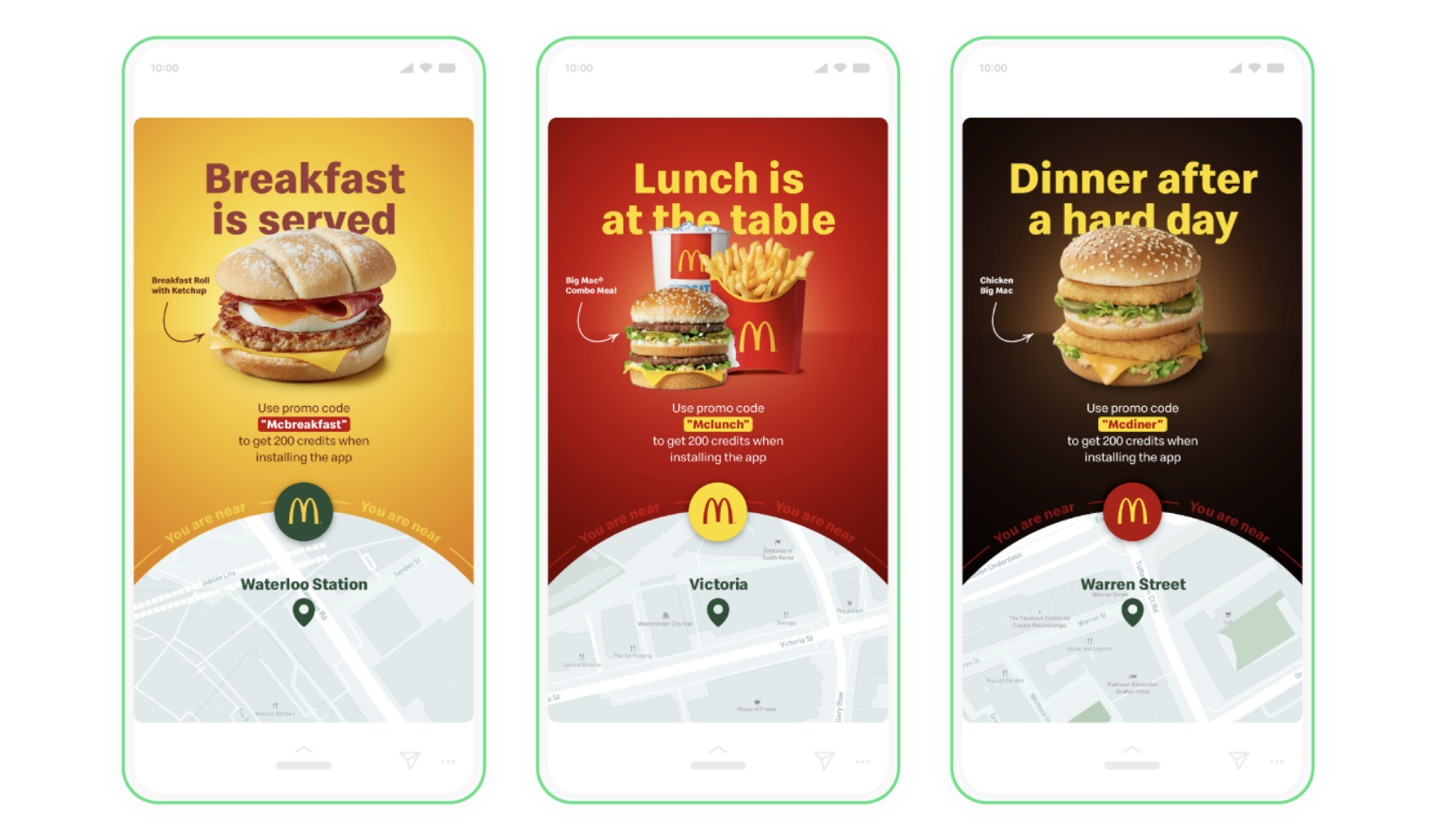Personalization is something that consumers have come to expect. In a digital landscape stuffed with brands competing for their attention, consumers have learned to filter out content that isn’t directly relevant to their needs.
Gen Z, the first generation of true digital natives, are so in tune with the internet that they are likely to leave websites that don’t immediately display intelligent personalization.
But how can you make sure that your website delivers a personalized experience? How can the same landing page give a different, personalized experience to every customer?
Let’s take a look.
What is website personalization and how is it related to SEO?
Website personalization is the process of creating unique experiences for each visitor to a website.
For example, dynamic content tools for a clothing website can show each visitor items appropriate for the season and weather conditions in their geographical area. Or past browsing and purchase data can be used to recommend products specific to the browser’s interests.
When done well, website personalization boosts engagement and drives traffic to your website. Both have a big impact on your SEO.
That being said, if it’s not done well, website personalization can make sites clunky and glitchy, which will lower search engine rankings. So, it’s important that you know what you’re doing.
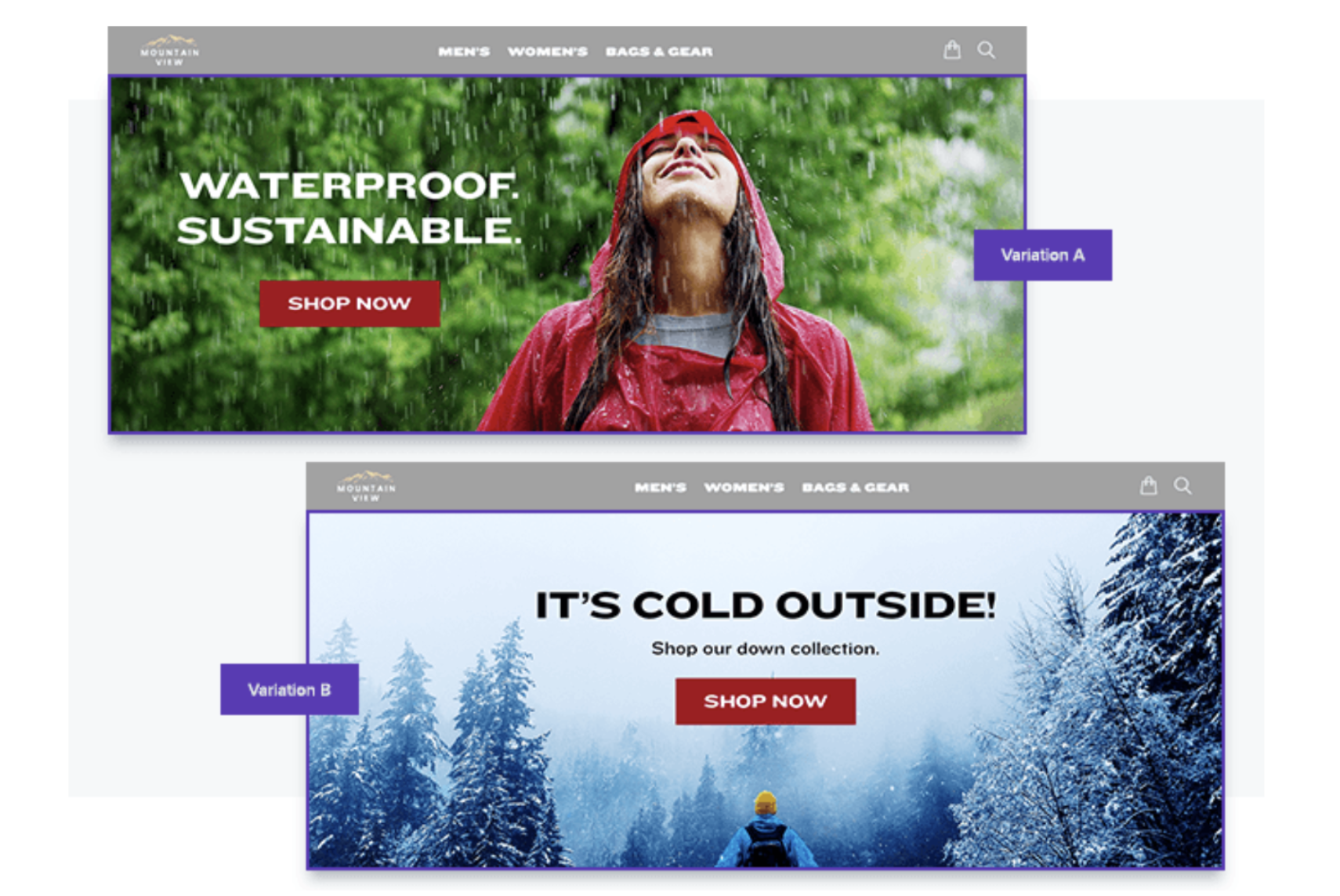
Source: dynamicyield.com
Personalization vs. customization
Personalization is the process of making content speak directly to an individual. It takes into account their demographic data, uses their first name, acknowledges special events like birthdays, shows content relevant to their needs and interests, and so on.
Customization is something that an individual does themselves in order to make content or an interface more accessible or appealing to them. For example, changing a website’s text size, picking a different font to use in a messaging app, or switching a platform from light to dark mode.
SEO benefits of website personalization
We’ve briefly mentioned how website personalization can impact SEO, but let’s take a closer look at its SEO benefits.
Over the years, if you look at the Google activity history, in terms of algorithm updates, it reflects an ongoing effort to improve search relevance and user experience, adapting to changes in user behavior and technological advancements. This historical perspective highlights why staying ahead with personalization is crucial for SEO success.
Creates an engaging browsing experience
A personalized website provides a much more engaging browsing experience than a more generic website. It speaks directly to each browser, draws them in, and gives them what they want. This results in a better user experience and consequently greater engagement. With greater engagement, you signal to search engines that your site provides helpful, quality content which is in turn fantastic for SEO.
Encourages repeat visits and brand advocacy
A good, engaging website will get repeat visits. By personalizing your website, you raise the chances of each browser coming back for more. Repeat visitors send another sign to search engines that your website is valuable, relevant, and popular.
What’s more, a great, personalized website experience can bring in loyal customers who will advocate for your brand. More brand advocates means more mentions, more shares, and more exposure. And all of this means better SEO.
[Case Study] Handling multiple site audits
Improves conversion rates
A more immersive, relevant website experience boosts customer satisfaction. By giving each individual customer exactly what they’re looking for, fast, you are likely to see an uptick in conversions.
Maximizes the ROI of your marketing efforts
Stronger conversion rates and repeat customers are great for your marketing ROI. Repeat customers are arguably more valuable than new customers. It’s a lot easier (and cheaper!) to get re-conversions than it is to get new conversions, and repeat customers spend an astonishing average of 67% more than new customers.
Types of website personalization
There are various ways you can personalize your website. Here are a few of the most popular.
Content personalization
Content personalization is all about showing your customers relevant, personalized content. Often, it uses dynamic content fields to address the customer by their first name, and directs customers to content that they’ll find useful.
For example, with content marketing for SaaS, marketers might send users to blogs relevant to the different uses of their software. A customer who uses the software for art would be directed to graphic tool tutorials. A customer who uses the software for word processing would be sent to articles about writing.
Product recommendations
Most people are familiar with personalized product recommendations. They’re what pops up on Amazon’s front page after you’ve bought a few products from them. Personalized product recommendations aim to quickly show customers items in which they might be interested, saving them the trouble of searching through your site for the perfect product.
Dynamic website elements
Dynamic elements can transform web pages for each individual user. They use data points to tailor content precisely to each individual’s situation and needs. For example, a dynamic content field within your homepage could use name data to transform a generic ‘Hello’ into a first-name greeting.
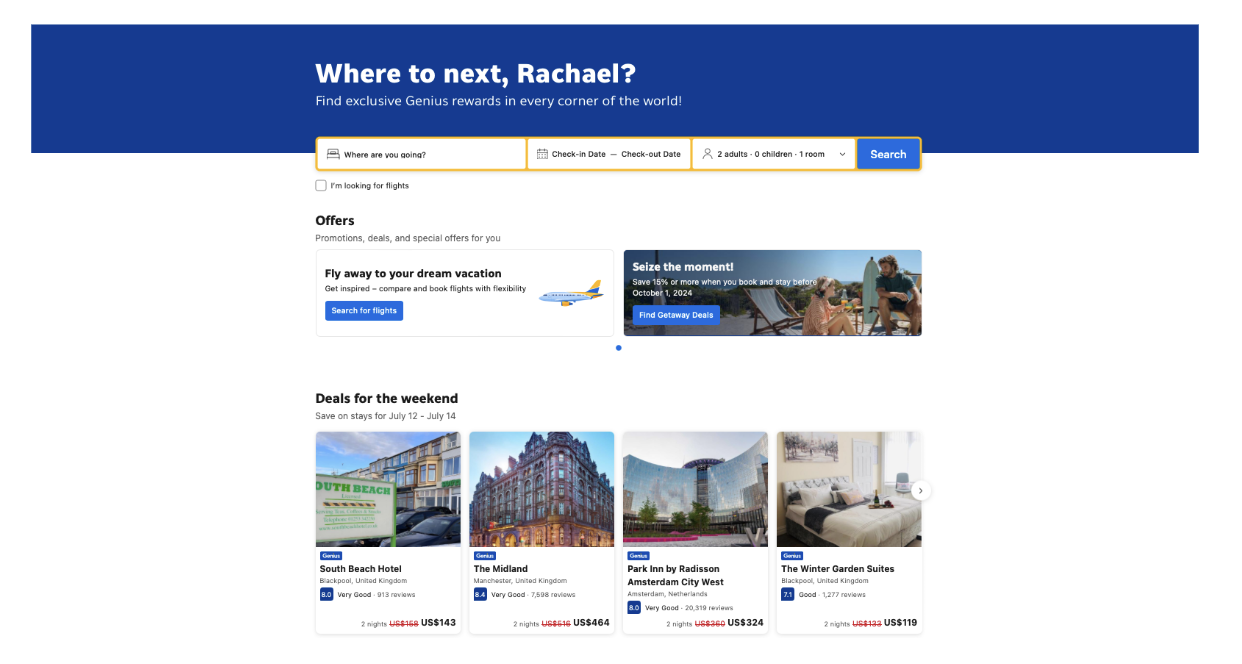
Source: Booking.com
On-site search personalization
Site-search personalization uses customer data to find the search results most relevant to that customer. For example, if someone types ‘shoes’ into the search bar, and previous search data shows that they have bought a lot of size 5 womens’ shoes in the past, a personalized search will deliver size 5 female shoes first.
To configure site search personalization, you’ll need to employ a third-party engine like Insider, AddSearch, or Elastic. These all use artificial intelligence and machine learning models to optimize your website’s internal search function. They typically use crawlers or APIs and index data using keywords. This allows the search engine to predict users’ actions and future intent, consider real-time and historical data, then show personalized results and recommendations.
Geo-targeting
Geo-targeting uses visitor IP addresses and location data to deliver content relevant to the customer’s location. Imagine a multinational brand with outlets in cities all over the world. With geo-targeting, a customer logging into their website would be shown promotions specific to their own nearest outlet, rather than generic promotions or promotions in outlets thousands of miles away.
[Case Study] Monitoring and optimization of a website redesign following a penalty
It’s worth noting that many customers will be wary of geo-targeting and not want to share their location for fear of how that data will be used. They have every right to be concerned, too, as there have been instances of platforms sharing information, constituting a significant breach of privacy.
That said, if you can find a balance between personalization and privacy, you’ll reap the benefits. The key thing is to be transparent with customers, explaining what data you’re collecting, how, and why. Give them the option to opt out, too.
You can enable location cookies on your website or opt for a third-party provider like Geofli. If you opt for the latter, just be sure to do your due diligence and go for a company that takes privacy seriously.
How to build a website personalization strategy
So, that’s what website personalization is and how it can benefit your business. Now, how can you implement it?
Clearly outline your objectives for website personalization
Starting with clear objectives will lend focus and drive to your website personalization process. So, before you do anything else, work out exactly what you want to achieve.
If you’re not sure where to start, here are some example website personalization objectives:
- Get more web traffic
- Build brand recognition
- Be more inclusive
- Strengthen customer loyalty
- Drive customer engagement
- Increase conversions
- Improve the user experience to Boost SEO
Conduct thorough research on your target audience
Research is crucial for personalization. You can’t tailor experiences to an audience if you don’t know who your audience is or what they want and need. This might involve demographic, geographic, psychographic, and behavioral data extraction.
So, dig deep into your audience data. Pull out any data points that you can use to aid your personalization efforts.
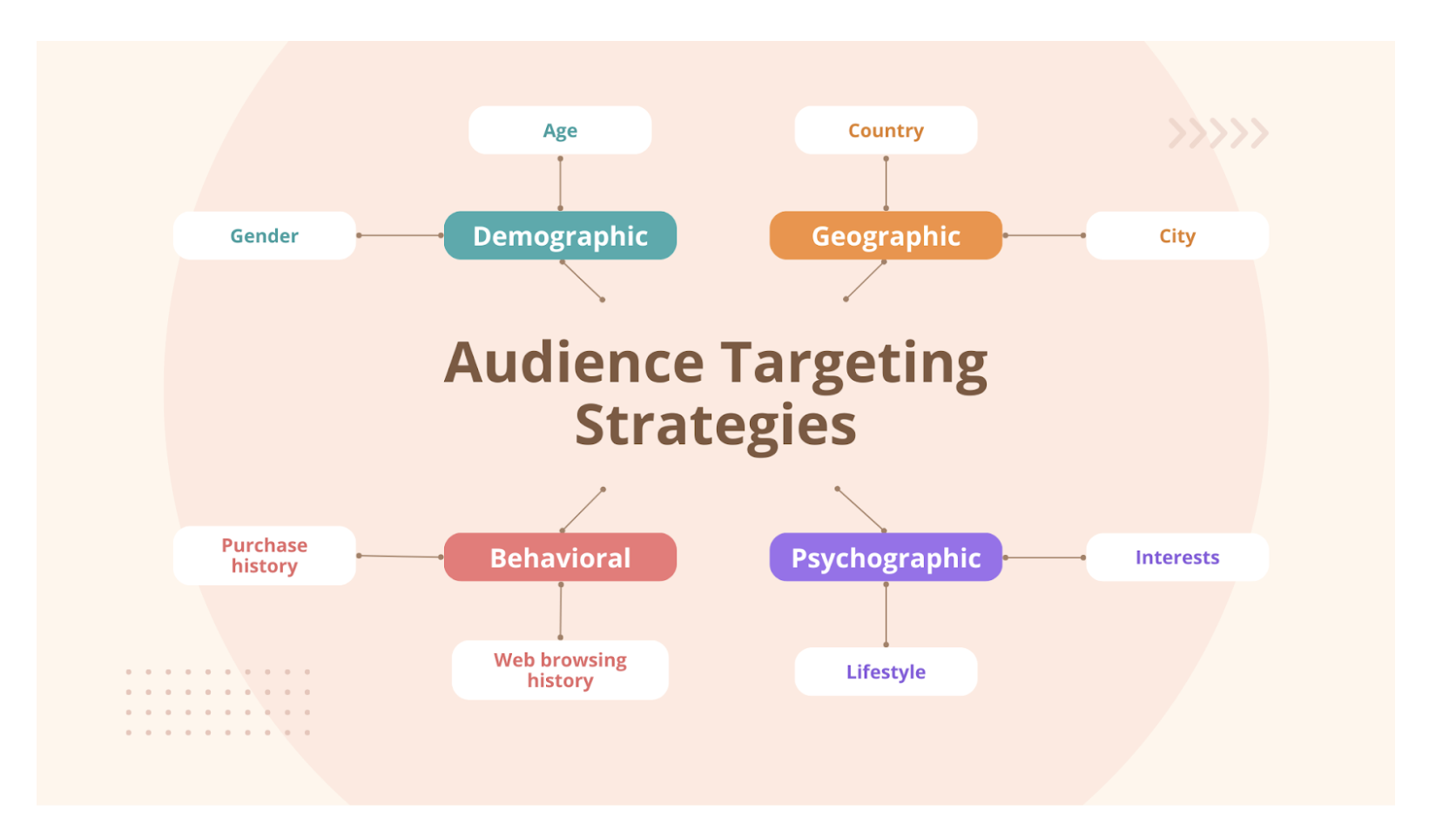
As a side note, it’s also essential to prioritize data breach prevention to protect your audience’s sensitive information. Ensure that all data collection and storage methods comply with the latest security standards to maintain trust and integrity.
Identify the different points of interaction for visitor engagement
Discover the touchpoints at which your visitors interact with your website. These are the places where personalization should be applied. For example, a checkout page might thank the customer, and show them special offers tailored to their preferences.
Segment your audience based on interests and preferences
We’ve spoken above about gathering data on your target audiences. Now, use that data to group similar audience members together into segments. You can then build personalization strategies intensively targeted to each segment.
For example, you might segment your audience into customers based in Europe and customers based in America. You can then give each audience content that’s relevant to the locations, situations, and regulations where they are.
This is, of course, a very broad example. You can get very granular with your segments if you want. The important thing is that you are grouping together audience members with similar characteristics that you can use to target your content.
Choose the right personalization tools and techniques
The right tools and techniques will make a world of difference to your personalization efforts. Be sure to research all the amazing personalization technology out there and pick the very best tools for your business.
There are plenty of resources on the internet detailing the right personalization tools for your situation. If you want to personalize user experiences across multiple channels – web, mobile, email, and ads – try a platform like Dynamic Yield. It’s easy to use with a drag-and-drop editor and comes with AI-powered automation and A/B testing to select relevant pages for different users.
Or if you’re looking to make more of customer segmentation, VWO Personalize is a good option. The personalization engine lets you analyze customer behavior to create tailored experiences for different visitor groups, plus it integrates with other tools like your CMS or ABM software.
Admittedly you’re at an advantage if you work B2C, but B2B and SaaS tools are around if you know where to look. And many of these SaaS tools combine personalized site search and product recommendations as part of a wider platform.
Adobe Commerce powered by Magento, for example, is one solution that pretty much has it all: scalable commerce and AI-powered personalized experiences customers.
Then there’s Salesforce, which uses cloud personalization to show different content to different leads to increase conversions. Take a look at this list of SaaS tools for more inspiration.
Create content variations tailored to each segment
Having segmented your audience, it’s time to create tailored content for each group.
Dynamic content fields can fine-tune your segmented content to an individual level, so don’t worry too much about that at this stage. Instead, create templates that hit on the needs and interests of each audience segment.
For example, a segment of young parents would benefit from content and recommendations dealing with their parenting needs. A segment of university students, however, would have quite different content needs. Create templates that cater seamlessly to both without disrupting their overall website experience.
Amazon is one of the most obvious examples of what this looks like in practice. The online retailer is arguably powered by personalization, constantly changing content based on different demographics and their interests. Using our above example, a shopper who has previously bought a Lego set on Amazon might be shown other Toys & Games in their “Keep shopping for” section or be shown relevant deals.
On the other hand, a university student who previously bought noise canceling headphones is more likely to be shown relevant tech products like keyboards, hard drives, or MP3 players.
Employ geo-targeting techniques to deliver content
We’ve gone through some of the uses of geo-targeting above. It’s incredibly useful to make sure that you’re not doing things like recommending a diner in New York to customers in London. You can (and should!) get incredibly specific with this kind of geo-targeting.
But geo-targeting can do more than that. For example, you might have customers all across the English-speaking world. People in the UK spell things differently and have a different frame of reference to people in the US.
By creating content versions spelled according to location and referencing local things, you can avoid alienating an entire national audience. Geo-targeting will make sure that the right content is delivered to the right people.
Run A/B testing and gather user feedback
Personalization is delicate. While people expect it, they will also find it creepy and intrusive if it goes too far.
To make sure that you haven’t crossed the ‘friendly/creepy’ line, run A/B tests on typical audiences, and gather as much user feedback as you can.
A/B testing is simple to run from most web hosts. It simply involves creating two content versions and running them both for a split audience. The content variation that performs best is the one you should go with.
Key takeaways
Website personalization can change the way your customers view you. A personal, relevant web experience that speaks directly to their needs will make your customers feel understood and valued. This in turn will create greater engagement, and boost your SEO.
